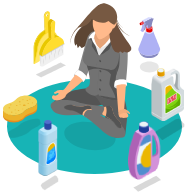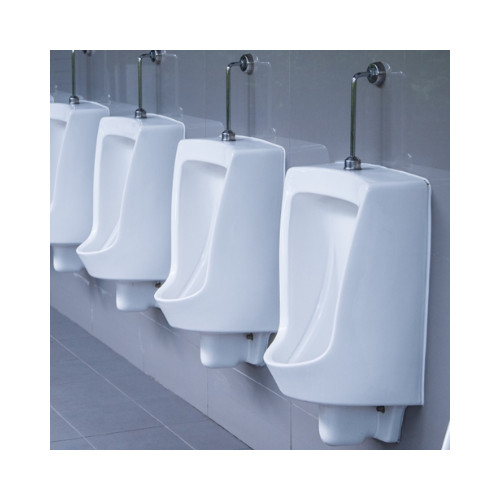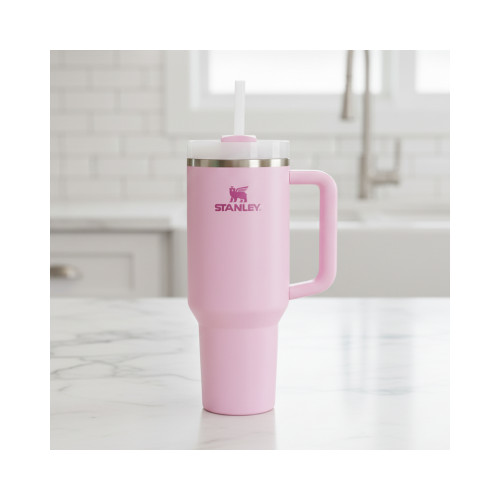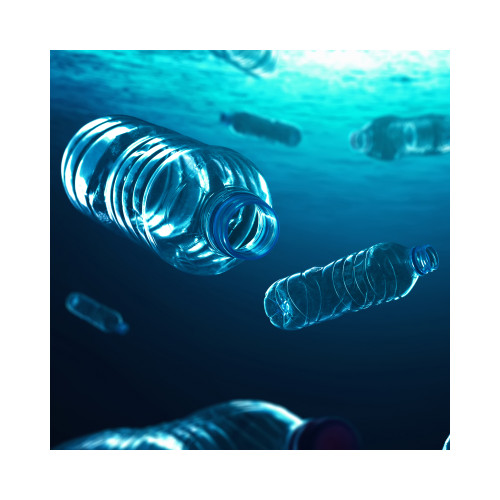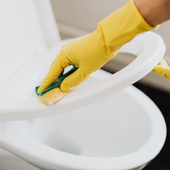
How to Clean a Toilet
Want to know how to clean a toilet? As strange as it may seem, your toilet may be the spotless area in your bathroom. A report from NSF International has shown that your toothbrush has the tendency of hosting the largest amount of germs, viral-bacterial, and mould in one's bathroom. However, 27 percent of toilet seats and 14 percent of toilet handles were found to have large amounts of yeast, mould, and germs on the surface, implying that many people are not taking good care of their toilets. Although you may sometimes wipe down or clean your toilet, that's certainly not enough to get rid of germs. The most effective way to get rid of viruses and germs is via thorough disinfection.
Epidemiology and biostatistics professor at the University of Arizona, Charles Gerba, discovered that a flush of the loo could kick E. coli bacteria into the air where it can levitate for six hours or more. The study noted that it is uncertain whether airborne bacteria could cause the same threat as other sources of germs. However, professor Gerba informed Good Housekeeping that generally, viruses can stay on surfaces like the toilet from a couple of hours to a good number of days, with flu and cold viruses surviving up to nine days, dependent on two factors: relative humidity and temperature.
Below are our top tips and advice on disinfecting all your toilet's unclean surfaces, as well as a few other tips on how to properly take care of the rest of your bathroom.
How to Effectively Clean the Toilet
Before you dive into the cleaning process, you will need to gather all the materials that you will need for the tasks. We recommend that you have a distinct set of cleaning tools you don't use on other surfaces across your house. This prevents cross contamination of toilet germs into other areas of your home. There are many bathroom cleaners that can be used, however, we have recommend some products that you will find on the list below. These products are easy to use and they tell you exact time limits for effective disinfection of toilet surfaces:
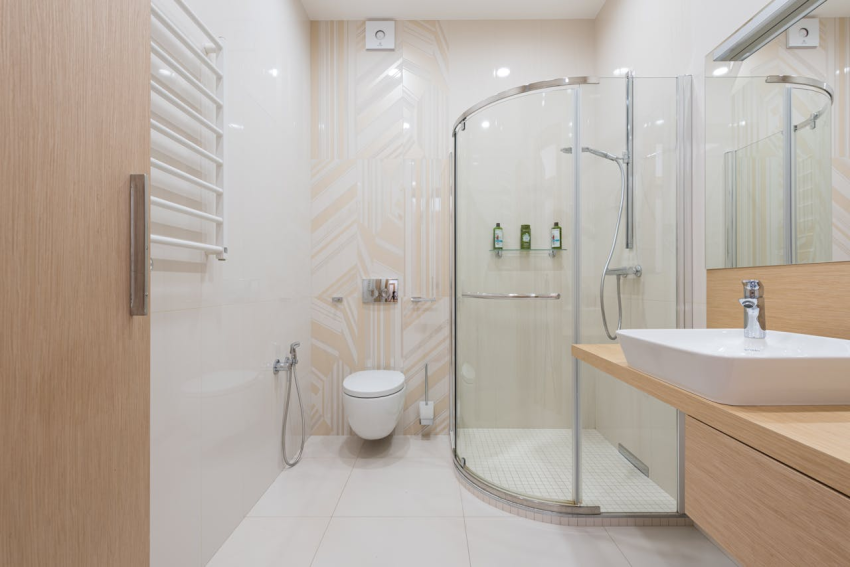
How to Clean a Stained Toilet Bowl
We recommend that you start with the toilet bowl when cleaning your toilet. Push all of the water in the bottom of the bowl through the u-bend using a back and forth motion. Eventually, the water level in the toilet will be very low. To remove limescale from the toilet, you can then apply a treatment of Duck toilet cleaner. Apply the product around the rim, ensure it covers the whole toilet bowl, then wait five minutes. Using the toilet brush, scrub the surfaces top to bottom. Finally, flush the loo to rinse the product away, holding the toilet brush in the toilet - this cleans the brush too! Flush again until the product is completely rinsed down the loo and the water is clear.
Next, using Astonish Pine Disinfectant spray liberally around the bowl to kill bacteria, paying attention to the area above the the rim where the Duck doesn't reach. Leave for 5 minutes (this is the contact time the product takes to kill the bacteria) then scrub with the toilet brush and flush again.
Disinfecting the Toilet Exterior
You can start cleaning the rest of the commode while waiting for the toilet bowl to effectively disinfect. Again, for this we recommend Astonish Pine Disinfectant leaving the product on the surface for the required contact time (5 minutes) to ensure the bacteria is removed fully. It must be noted that to disinfectant propoerly, you must first clean any debris or scum found on the toilet surface. Before you start cleaning, also make sure that any body fluid spills are wiped clear from the surface. You should use disposable cloths colour coded for the toilet as these can be binned straight away, preventing any risk of cross contamination of germs. Colour coded clothes also prevent any possibility of toilet cloths being used in another environment such as the kitchen!
- To start cleaning the outside of your toilet, work from top to bottom. Apply disinfectant to the lid, sides and front of the cistern. Then pay special attention to the small between the tank and toilet seat, this area is easy to miss! Next, spray the toilet seat through, lifting and spraying underneath to ensure you thorough spray the toilet rim top, and also the underside and top side of the seat and lid. Finally, spray the toilet base.
- Leave the spray for 5 minutes to disinfect, and start wiping top to bottom with disposable cloths. Use one cloth for the cistern, one for the seat, one for the base and one for the rim.
- Next, work on tough areas that you know will house more germs while waiting for the applied disinfectant to dry. A report from NSF International shows that the flush handle of the toilet can accumulate dirt more than even the toilet seat.
- Use a paper towel to clean any condensation and remaining disinfectant residue from the toilet, making sure that all surfaces are dry. Again, use a fresh sheet for the cistern, toilet seat, rim and base.
How Often Should You Clean Your Toilet?
Disinfecting your toilet helps prevent you and your loved ones from the risk of coming into contact with harmful germs in your home, particularly if one of your family members is isolating and cannot be quarantined in his or her own apartment. However, it's essential to always remember that the toilet can house viruses and bacteria just after one use.
Furthermore, you should carry out full disinfection two to three times a week, especially if you have a sick person in your house. Apart from flu season, once or twice a week should be enough. It's also important that that you also create time to disinfect your supplies anytime you sanitise your toilet, they can hold germs too and they may even be stored in a different room of the house!
Stay Connected
Stay connected and be the first to know about our latest products, special offers, and exciting news:The Cleaning Blog
Want to learn more about cleaning? From the latest cleaning and hygiene news to handy how-to guides, why not check out our most popular blog categories.Stay Connected
Stay connected and be the first to know about our latest products, special offers, and exciting news: